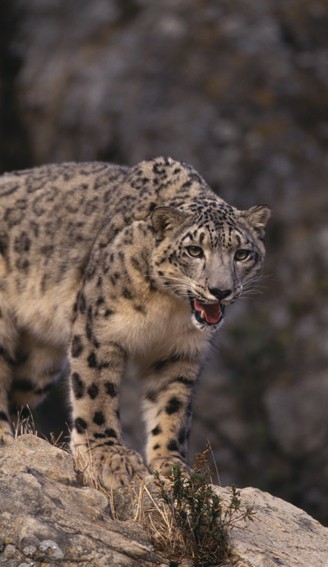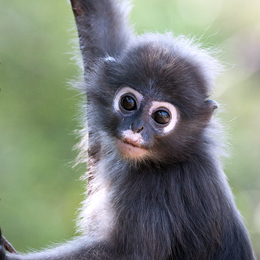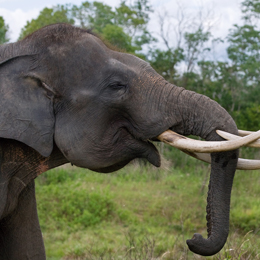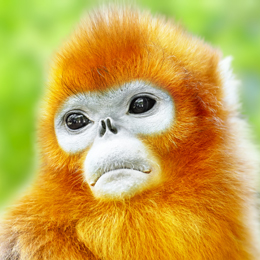Description
Though they are closely related to tigers, snow leopards get their name due to their leopard-like spotted fur. Snow leopards are scientifically named as Panthera Uncia. The name Uncia originates from the Old French word ‘once’, which was used earlier to describe all lynx-sized cats, including snow leopards. Its population is distributed over 12 countries in Central Asia. Due to this, the snow leopard is known under several local names throughout its range.
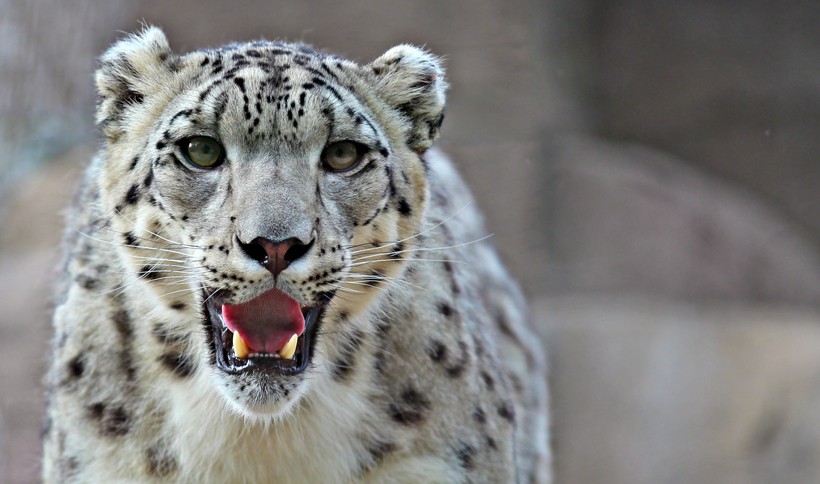
Closeup young male snow leopard
?
Image credits: cpaulfell/Shutterstock
Despite its small size, the snow leopard earns its place in the list of big cats, especially due to its ability to hunt large prey. Their weight ranges from 25 to 55 kg, and the length from head to the base of its tail can be up to 80 to 150 cm. Some males can weigh up to 75 kg, but observations of such large males are extremely rare. The snow leopard has a long thick tail which allows it to balance its body while running and climbing on the uneven mountain ranges. This tail can be up to 100 cm in length. The leopard also wraps its furry tail around its body while resting, in order to protect itself from the chilling winds of its habitat. The thick gray-white to yellow colored fur provides warmth while the leopard-like black spots provide a perfect camouflage.
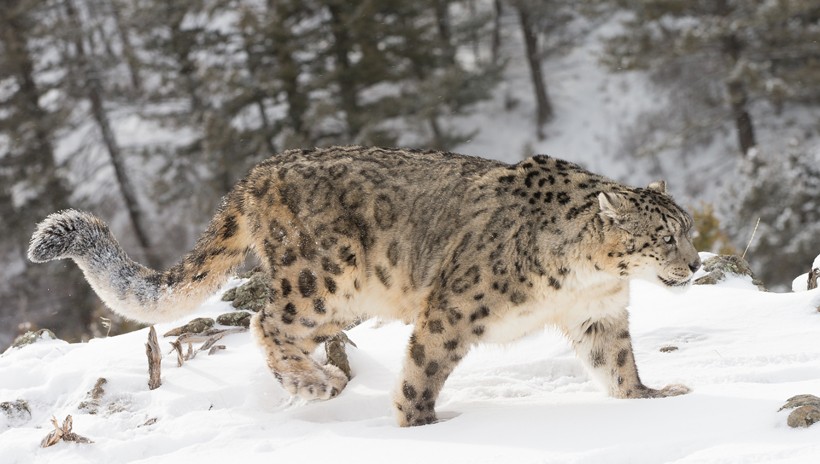
Snow leopard walking on a snowy hillside
?
Image credits: Dennis W. Donohue/Shutterstock
The males are larger than the females but, apart from size, there are no other visible differences to distinguish between both sexes. Their lifespan ranges between 15 to 20 years, but they can live longer in a captive atmosphere. Just like other big cats, the snow leopard is equipped with sharp senses. It can see, smell and hear exceptionally well and the predator uses a combination of all its senses to hunt and survive in the wild.
Two subspecies have been mentioned frequently, but their recognition is yet to be confirmed. U. u. uncia is the name given to the subspecies that occurs in Mongolia and Russia while the subspecies found in western China and the Himalayas is known as U. u. uncioides.
Habitat & Diet
Snow Leopards are found only in the rugged mountains of Central Asia. They prefer higher altitudes from 2,500 up to 6000 m during summer, while during the cold winter months the leopard moves to lower altitudes from 1500 to 2000 m. The snow leopard is very uniquely adapted to survive in chilly climates.
Their thick fur and tail, flat paws and small ears are all designed to reduce heat loss while the highly developed nasal cavities allow the snow leopard to breathe the thin air at high altitudes.
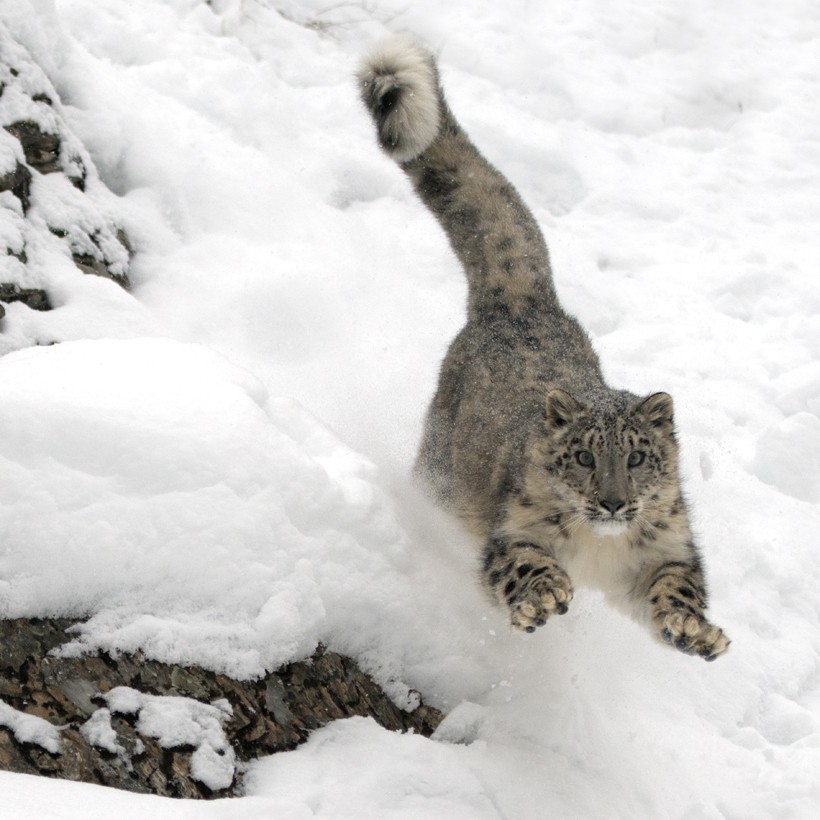
Snow leopards can leap more than 9 meters in a single jump.
?
Image credits: Jeannette Katzir Photog/Shutterstock
Snow leopards are solitary, extremely shy and elusive cats and for these reasons rarely spotted in the wild. Wild snow leopards frequently prey on mountain mammals like the Himalayan tahr, markhor, argali and bharal. Like other big cats, snow leopards are highly opportunistic hunters. When an opportunity presents itself, a snow leopard can go after anything from rodents and hares to horses and camels. Snow leopards are also highly efficient scavengers and nest raiders. With a leap of up to 9 meters no prey animal is out of reach for the agile snow leopard.
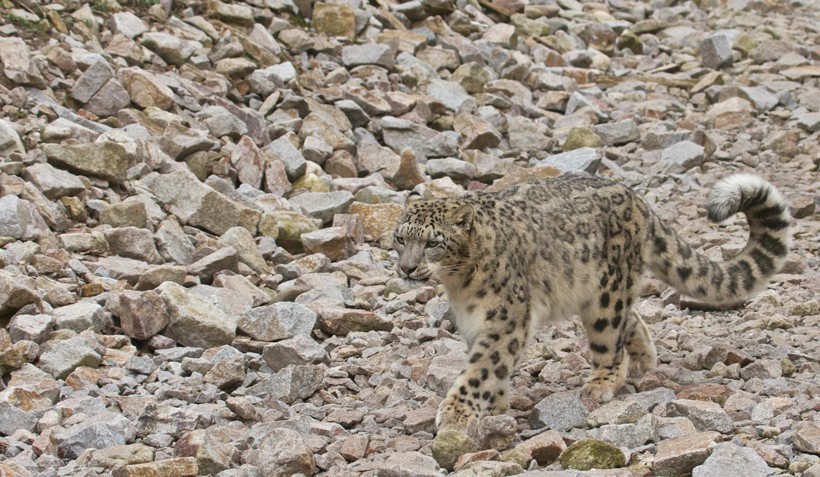
Snow leopard walking in a rocky desert
?
Image credits: chbaum/Shutterstock
Snow leopards hunt with a combination of stealth and speed. Their habitat does not support long distance sprinting. Hence, snow leopards stalk and gain ground until finally bursting into a sprint to grab its prey. In the rugged mountains, the snow leopards climb higher and ambush the unsuspecting prey from above. The tail plays a key role, as it allows the leopard to run, jump and climb swiftly on the rugged cliffs. A large kill in the snowy mountains of Central Asia can sustain the solitary leopard’s diet for up a week, which means that they don’t have to hunt every day.
Snow leopards are at the top of the food chain (apex predator), which means that they have no natural predators. However, snow leopards can come in conflict with other predators such as wolves and tigers. Due to its small size and solitary behavior, the snow leopard is clearly outnumbered and outgunned against other large predators of its habitat. Hence, they usually prefer to avoid any conflict. The snow leopard is a very agile climber and when it senses a threat, it quickly retreats by climbing up the nearest tree.
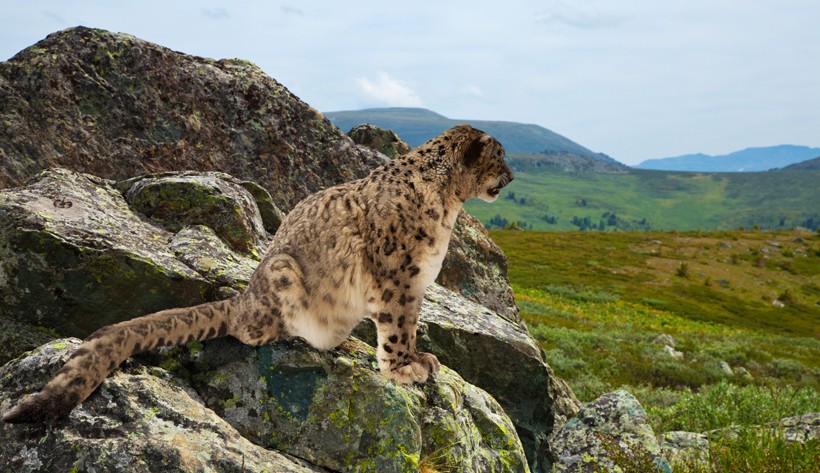
Snow leopards have no natural predators
?
Image credits: Iakov Filimonov/Shutterstock
However, predator conflicts are extremely rare in the rugged mountainous regions of Central Asia. The only predator that kill snow leopards is the human. When food gets scarce, the snow leopard may prey on livestock, which brings it directly into conflict with humans. Shepherds and farmers see these big cats with hatred and kill them out of fear of being attacked by this predator.
Reproduction and Life Cycle
Snow Leopards reach sexual maturity after 2 - 3 (females) or 3 - 4 years (males). Mating occurs in the late winter months of January till March. During the mating season, sexually mature snow leopards show a remarkable increase in their marking and vocalization activities. Once a pair is formed, it spends a few days together and mate several times during this period. After a gestation period of approximately 95 to 110 days, the female gives birth to 2 to 3 cubs in a concealed rocky den.
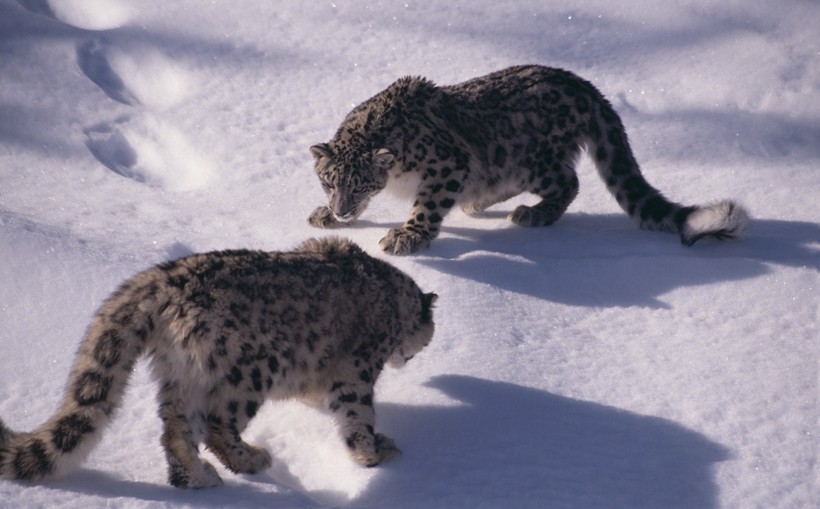
Snow leopards facing off
?
Image credits: Volt Collection/Shutterstock
The cubs weigh around 300 to 500 grams at birth and they have a thick fur, which provides protection from the cold winds. The cubs are born blind. They open their eyes in 7 to 10 days after birth and starts walking when they are at least 5 weeks old. The cubs begin to eat solid foods after 10 weeks and are weaned till they are 5 months but they still depend on their mother for up to 18 to 22 months. The cub leaves the mother at the age of two and begins then an independent life. The independent juvenile reaches sexual maturity when it gets 2 to 4 years old after which the cycle of life repeats when it finds a mate.
Snow leopard cubs have a very low rate of survival as they face numerous threats in the first couple of years of their lifespan. Apart from predators, the cubs have to survive extreme threats like chilling winds and scarcity of food. The mother has to hunt continuously for the survival of cubs and for that, she has to leave the cubs alone in the den. Predators like wolves and foxes kill these leopard cubs when they spot the den. Moreover, the mother has to pull the carcass back to the den, which often attracts scavengers. Due to harsh conditions of their habitat, several adult snow leopards and cubs succumb to starvation each year.
Almost all species of genus Panthera have been interbred to form hybrids, but there are no records of surviving snow leopard hybrids.
Behavior and Communication
Snow leopards are quiet and shy natured big cats. Sightings of wild snow leopards are extremely rare due to their elusiveness. Snow leopards prefer a solitary lifestyle, with mating couples and mothers being an exception. When this mammal isn't hunting, the snow leopard spends the time resting on a tree or a rocky den. Snow leopards are nocturnal in nature, which means that most of its activity occurs at night. The gray coat provides perfect camouflage in the snow at night as the snow leopard stalks herds of mountain sheep.
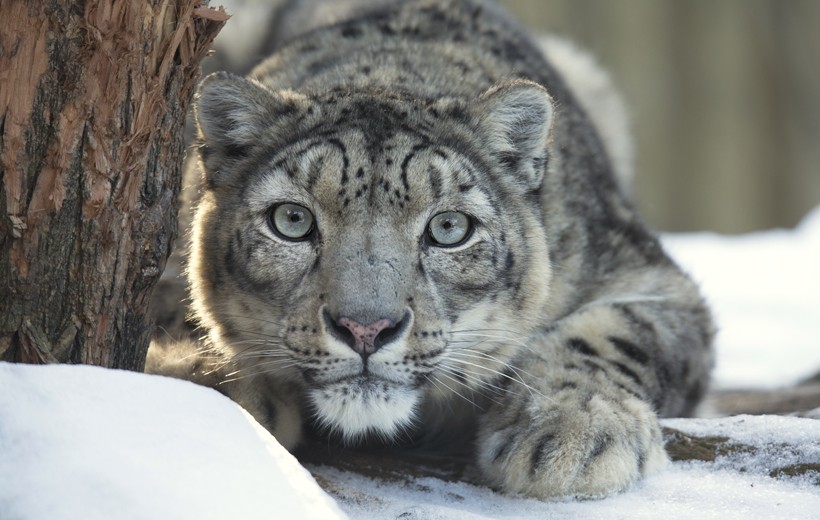
Snow leopard observing prey
?
Image credits: Vladislav T. Jirousek/Shutterstock
Unlike most big cats, the snow leopards cannot make loud roars. Vocalization consists of mews, growls, hisses, purrs and chuffing. Due to their solitary nature, snow leopards show only a minimal level of communication with other individuals of its species. Vocalization increases during the mating season as it is the only time of the year when adult snow leopards can be seen close to each other.
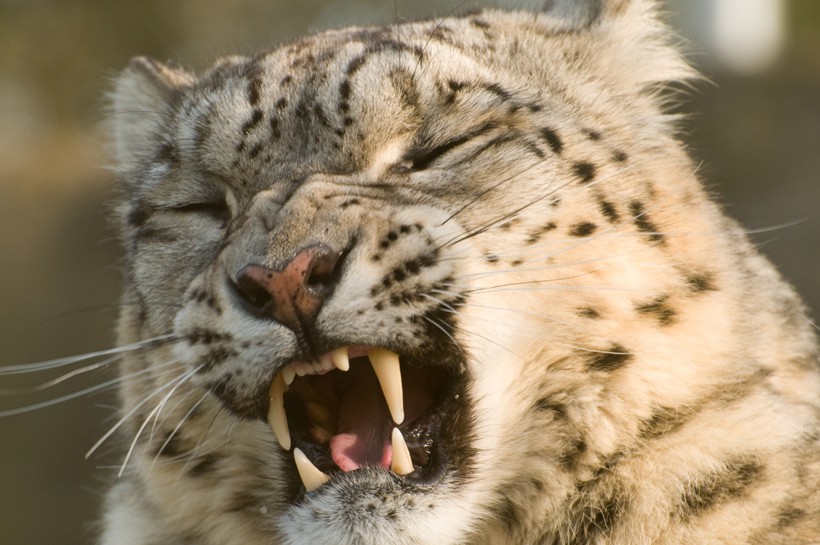
Snow leopard yawning
?
Image credits: Andy Poole/Shutterstock
In snow leopard habitat only a few other animals dare to spend a solitary lifestyle. The snow leopard manages to survive due to its extraordinary intelligence. It is also one of the best jumpers of the animal kingdom, capable of jumping 9 meters. A misjudged jump may be fatal in the rugged mountains of Central Asia, but the snow leopard is smart enough to execute a well-timed jump every time.
These behavioral characteristics are clear indications that snow leopards are quite intelligent and understand their surroundings very well.
Populations and Conservation
Snow leopards are distributed across 11 countries located near the mountainous terrain of Central Asia. Wild populations exist in China, Russia, India, Nepal, Bhutan, Mongolia, Afghanistan, Pakistan, Tajikistan, Kyrgyzstan and Kazakhstan. Due to their shy nature and a vast range of distribution, the exact population numbers cannot be determined. However, it is estimated that only 4,500 to 7,500 individuals are left in the wild, with China being home to almost 60% of the total wild population of snow leopards. The IUCN assessment of 2008 concludes that the species is endangered throughout its range; which means that without effective conservation efforts the snow leopard population may go extinct in the near future.
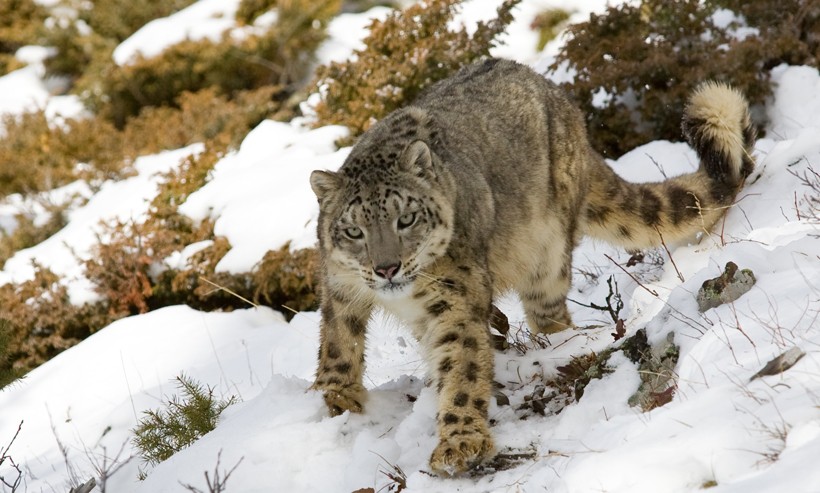
The snow leopard is the only big cat evolved to survive at high altitudes.
?
Image credits: S.R. Maglione/Shutterstock
Recent conservation efforts have proved to be quite successful as several snow leopards were successfully bred in captivity. However, the human population and its interference in the snow leopard habitat are major threats to its population. Snow leopards’ natural prey is decreasing in numbers as human livestock invades the grazing grounds. As the prey gets scarce, the snow leopards often hunt livestock. As the locals lose livestock, they develop hatred towards the predator. Conflict with humans often results in the death or relocation of the snow leopard. On the other hand, over the course of time only two instances have been reported, where a snow leopard had injured a human.
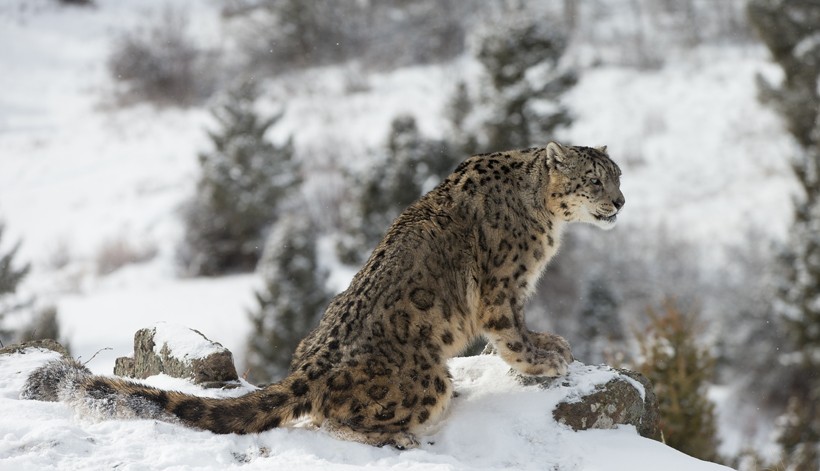
Elusive snow leopard on snow covered hillside
?
Image credits: Dennis W. Donohue/Shutterstock
Global warming is also a major threat for the snow leopard population. As global temperature increases, the treeline shifts to a higher altitude, resulting in decreasing area and thus prey numbers. Wildlife researchers are constantly trying to increase the population of prey animals in snow leopard habitat. This method can decrease the attacks on livestock and eventually establish a satisfying co-existence between humans and snow leopards.
Evolution
All big cats, bears and hyenas evolved from smaller mongoose-like ancestral species. The fossils of the species Dormaalocyon latouri provided valuable information about the evolution of big cats. Dormaalocyon latouri lived on earth approximately 55 million years ago. It is considered to be the ancestor of all big cats. Approximately 3.2 million years ago, ancestors of tigers and snow leopards split from their ancestral species. DNA studies prove that snow leopards are more closely related to tigers than to any other big cat.
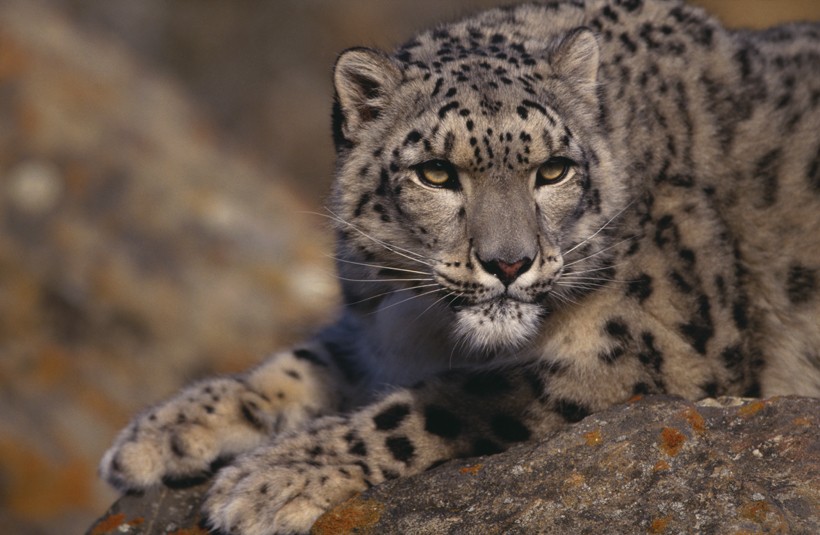
Snow leopard on rock
?
Image credits: Volt Collection/Shutterstock
The closely related species tigers and snow leopards went through several further adaptations according to their habitat. The snow leopards evolved to survive at high altitudes especially. Compared to other big cats, the snow leopards have a shorter snout and smaller ears. These adaptations reduce heat loss and enable survival in the cold chilly weather of their habitat.
Funfacts
- Snow leopards are more closely related to tigers than leopards.
- The snow leopard has been depicted in many emblems such as The Coat of Arms of Tatarstan, Seal of Samarqand Uzbekistan and Symbol of Almaty Kazakhstan.
- Only two instances of snow leopard attacks on humans have been reported so far. The first case occurred in 1940, where a rabid leopard attacked two people while in the second case an old toothless leopard tried to attack a person.
- It is the only big cat evolved to survive at high altitudes.
- Snow leopards have padded paws that allow them to walk on snow.
- In the famous 2008 film named Kung Fu Panda, the main antagonist is an animated snow leopard.
- Snow leopards can leap more than 9 meters in a single jump.
- There are only 4500 to 7500 snow leopards left in the wild.
- Snow leopards have a long tail; the tail can be as long as its body length.
- Snow leopards cannot roar like lions, tigers or leopards. Instead, they make small sounds like mewing and chuffing.
